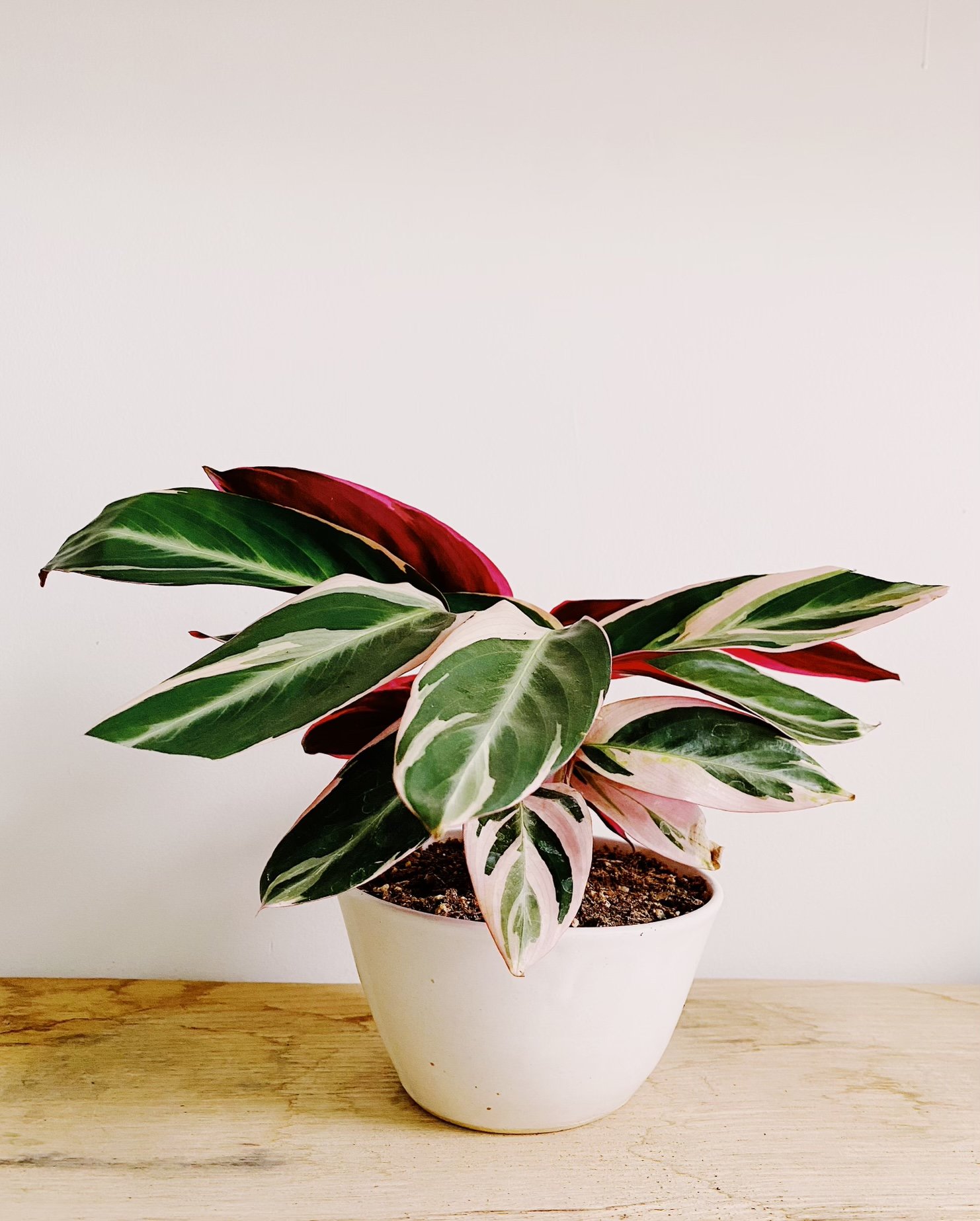Calathea Care 101
With their incredibly patterned and colorful foliage, Calatheas are an easy choice to break up a sea of green leaves in your plant collection. Their beauty does come with some extra needed care, as these plants can be a little bit trickier than some others to get the hang of and care for correctly—read on to find out the intricacies of caring for Calatheas.
A Calathea lancifolia, or ‘Rattlesnake Calathea.’
Native Environment
As with all indoor plants, we should first look at their native environment, and then try to replicate those conditions for them as well as we can.
Calatheas (and their relatives in the Maranta and Stromanthe family) are all mostly native to tropical rainforests in Central and South America. They are found growing underneath the canopies of trees and receive ample humidity from the rainforest and favor filtered or indirect sunlight with their native temperatures not getting too far below 65°F or above 85°F.
Calatheas, along with other plants in the Marantaceae family, are also incredibly photoreactive in that their leaves will move around in response to the sunlight shifting throughout the day in an effort to be able to capture light more efficiently.
Another member of the Marantaceae genus, the Stromanthe ‘triostar.’
Sunlight
Being found natively in rainforests means that Calatheas will prefer an indirect or ambient light, and they can also tolerate direct morning sunlight from an east-facing window.
It’s important to keep Calatheas out of any harsh afternoon sunlight found in west or south-facing windows, as their leaves are very susceptible to getting burnt or scorched from the hot, intense sunlight found in those spaces. The amount of sunlight your plant is receiving will inform how often you are watering it, along with how quickly it grows.
Watering
Calatheas, like many other tropicals, will prefer for the first couple of inches of their soil to dry out in between waterings. As with all plants, a thorough saturation of the soil until water drips out of the drainage hole is key, and doing so will promote healthy roots and growth in your plant.
Underwatering in Calatheas will manifest as brown and brittle edges on leaves and stunted new growth, while overwatering will likely present itself as limp or rotting stems, along with yellowing leaves.
Calatheas are also extra sensitive to the trace chemicals found in tap water, which can build up in the tips of leaves over time and waterings, causing discoloration. To mitigate this, distilled water or filtered water are better choices to water Calatheas with.
Calathea ‘Burle Marx’—most Calatheas have a dark red or purple underside to their leaves.
Soil
Calatheas will prefer soil that allows for ample drainage, but still holds onto some water. To achieve this, you could either try an all-purpose potting mix that already has some amendments, such as perlite, or you could mix in some extra orchid bark and/or horticultural charcoal to create extra air pockets in the soil to allow water to pass through easily.
As with other tropical plants, aiming for a mix of 60% potting soil and 40% soil amendments should allow for a mix that gives the roots proper aeration and drainage to help prevent soil that stays stagnant and wet for too long.
Humidity
Since their leaves don’t hold a tremendous amount of water, Calatheas will also benefit from having higher humidity indoors. Whether this means placing your plant in a more naturally humid location in your space, or placing it near a humidifier is up to you and your unique home environment!
Higher humidity becomes crucial for these plants in the winter months when indoor heating turns on, leading to drier spaces. Lack of adequate humidity in Calatheas will typically look similar to under-watering, with browning and brittle edges on their leaves. In the spring and summer, depending on the area in which you live, indoor humidity shouldn’t be as crucial for these plants once the heating indoors is turned off for the season.
Calathea ‘Dottie’ showcasing the range of colors that members of the Calathea family can have on their leaves.
Potential Pests
Like some other plants, Calatheas can be susceptible in particular to spider mites when their care conditions aren’t being met. Outbreaks are more likely to occur in the winter months when the humidity is lower indoors—plants that are stressed due to watering, light, or humidity issues are more prone to attracting pests, so it’s best to stay vigilant! A good routine to adopt is regularly wiping down the fronts and backs of the leaves of your Calathea with a wet cloth as a preventative for spider mites.
If your Calathea does end up getting spider mites or another plant pest, we have another article on how to deal with them, along with the tell-tale signs of their presence on your plant.
Calatheas can take some trial and error to care for, but they make for quite the colorful houseplant and can easily liven up a space with their bright and beautiful foliage.
If you have any further questions on these plants, drop a comment below, or stop into one of our shops to chat with us!
Written by: Egan Thorne
Photos by: Sebastian Muñoz




